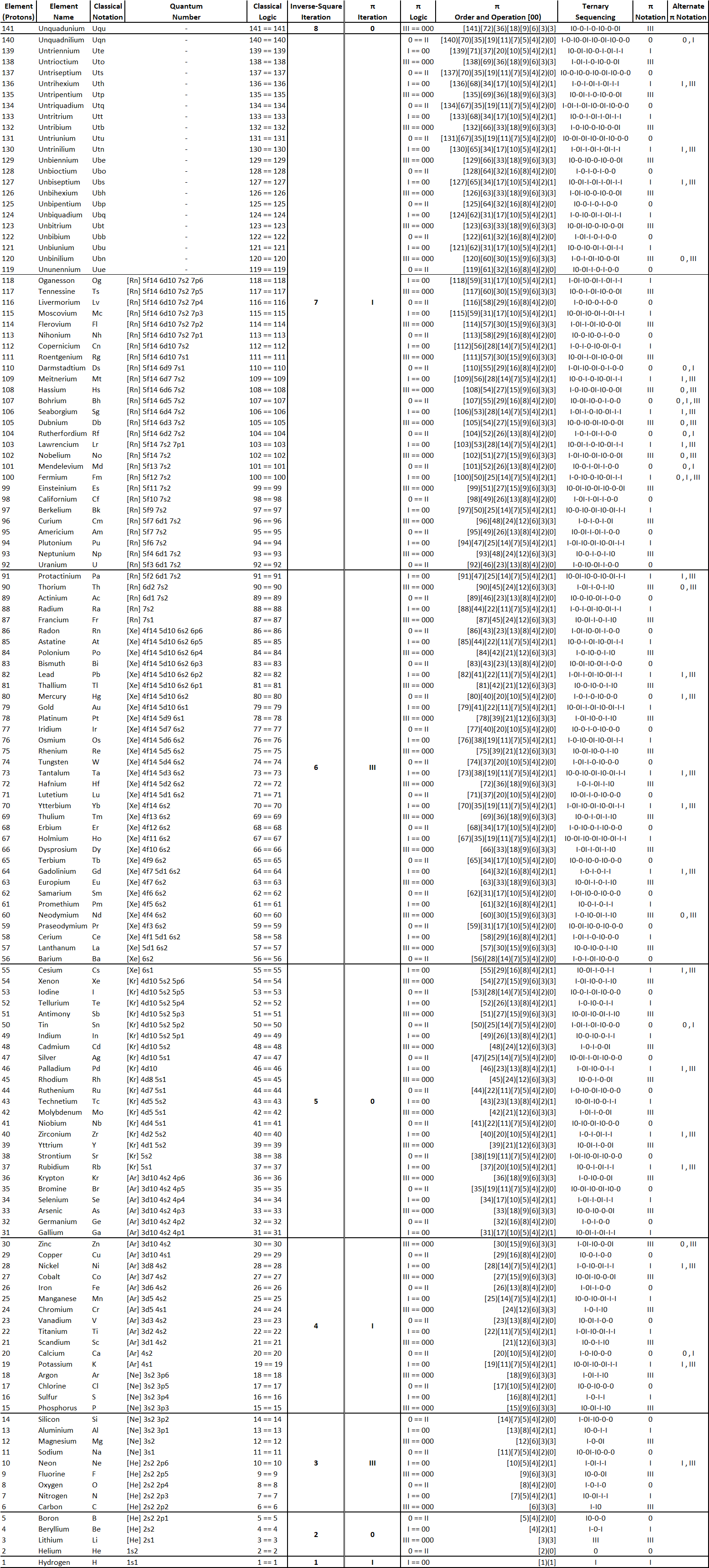Prime Notation
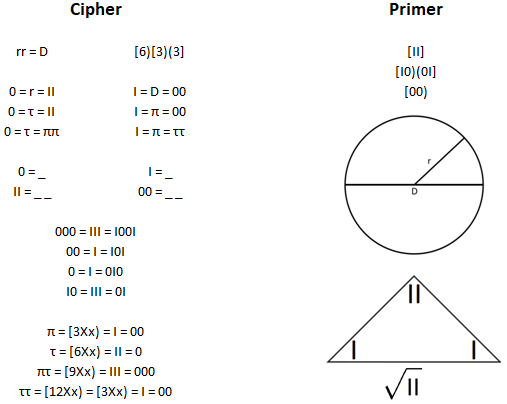
00 == I
II == 0
000 == III
2T == Π
2Π == T
3T == 3Π
[12Xx) == [3Xx)
[3Xx)[3Xx) == [6Xx)
[18Xx) == [9Xx) == [3Xx)
0 Kelvin == Π
[6)[3)(3]
I0 == 0I
Finding Universal Structure
UPDATED Apr 7, 2022 – One and Zero have a precise distinction in Classical Mechanics as a binary set. In Prime Mechanics, I and 0 are used to denote Pi and Tau, respectively. Where this concept quickly breaks down in Classical Mechanics, it establishes the entire foundation of Prime Mechanics.
In Prime Mechanics we rely on a ternary loop – I, 0 and III – stemming from Absolute Zero. PM is polysemic, meaning there are numerous ways to annotate the same expression.
Prime notation is hypothesized to demonstrate the ternary loop structure and function of observable phenomena. Using the Pi Logic column in the table at the bottom of this page, we can see that where 0 == II and I == 00, we may divide values without losing information (remainders, rounding). This is because we begin by tallying the number that is being mapped. ‘Mapped’ is relative to I == Pi – in other words, we may convert any numeric value to a grouping of single units (tallies). While this is remedial math, it is completely counter-intuitive to Classical Mechanics, which validates the tally system but does not equate I to Pi and does not allow for a perfectly even division of odd values.
Mapping numeric values allows us to understand their relationships to other values as both form and function (both their base structure relative to the first three expressions and their sub-sequencing relative to their neighboring values). A ‘Unified Field’ is referenced here as accounting for both unique expression and total expression of Universal phenomena. By using Prime notation (the Quantum and Atomic sub-structures are simply sets of languages) any observation that may be assigned a numeric value may be validated and re-expressed for efficiency.
As an example of the basic operator of Prime notation, we may consider an odd or even number within the Natural field. The Cipher and Primer above show us the rudimentary logic – ultimately, our entire ordering and structure stem from Absolute Zero.
In Classical Mechanics, the Irrational field detracts from the point coordinate (truly, non-coordinate) of (0,0) on a traditional X-Y axis. Where the (+,+) quadrant is the only quadrant to utilize Natural numbers, and where [3Xx) defines the ternary loop of Pi (I,0,III), we rotate the four-quadrant system 45 degrees counter-clockwise,
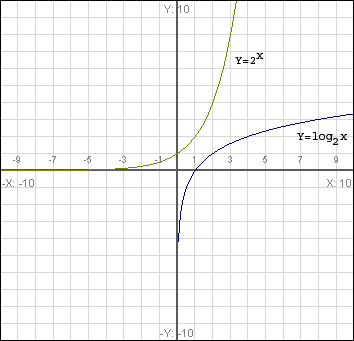
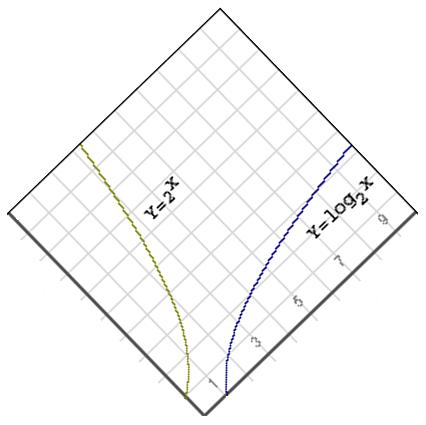
By mapping a ternary structure within this quadrant as a forward-diagonal, we condense wave mechanics into a single field. Using the cipher/primer, we can more easily understand the order and operation of the ternary notation:
EVEN values — Divide by two until reaching an ODD number or until a Prime value is reached
ODD values — Subtract one*, divide by two, add two* – repeat until an EVEN value or Prime value is reached
UPDATE Dec. 28, 2020: An updated conversion method for ODD values is to simply add three then divide by two
*We subtract one then re-add two because we have converted bits to non-bits using 0 == II and I == 00. For example:
9 == IIIIIIIII == 0000(I) == 0000(00) == 000000 == 6 == IIIIII == 000 == 3 == III
Numbers with more than one valid Prime value (Element 107, for example, is all three values – at this stage, it is theorized to be a critical point within higher geometry) are most efficiently expressible as the value which allows the forward-diagonal structure to continue as a I,0,III ordering.
Prime Mechanics takes observation through a medium as an opportunity to convey information efficiently. In Classical Mechanics, eponymous nomenclature, advanced algorithms and numerous conflicting theories detract from a much simpler underlying foundation and structure. The Ego component to this is an important aspect of understanding how and why Prime Mechanics A) Has been developed and open-sourced outside of the academic community and B) Sees ‘Science’ as a language of Classical Mechanics, not vice versa. Bridging languages rather than attempting to establish linguistic authority has been a primary goal of the Axiom project up through the discovery of Prime Mechanics.

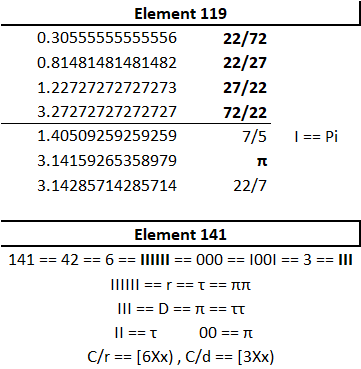
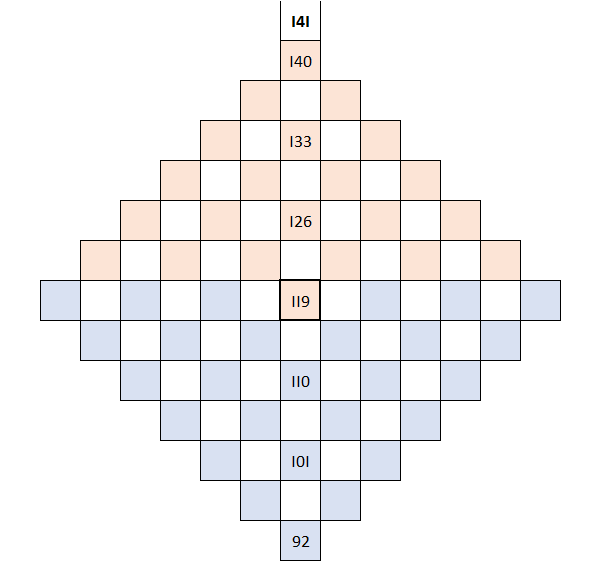
In four examples of the Pi calendar below (there are currently any number of unmapped variations as of Aug. 10, 2020), we establish the general structure through which Prime notation unfolds. Where Prime notation consists of just three values, I, 0 and III, we may begin to map complex structures. The natural strength of Prime Mechanics over Classical Mechanics is that it does not require an Irrational field, and therefore does not require opposite forces. Where root-negative-1 is an abstract insertion into a priori mathematics, and where Absolute Zero may be designated the coordinate (0,0) on an X-Y axis as a Thermodynamic constant, Prime notation maps Universal phenomena across all orders of magnitude, from Singularity to Outer Limit. Where Pi is approximated as 22/7, Prime Mechanics accounts for the Observer Phenomenon of Classical Mechanics by expressing that observed elemental structures evidence the current Time and Place of Observation relative to a global consensus (public knowledge as of 2020, Gregorian). Where the Observer Phenomenon is a theoretical construct of CM, PM sees validation of the theory as a bio-cosmological expansion stemming from Π.



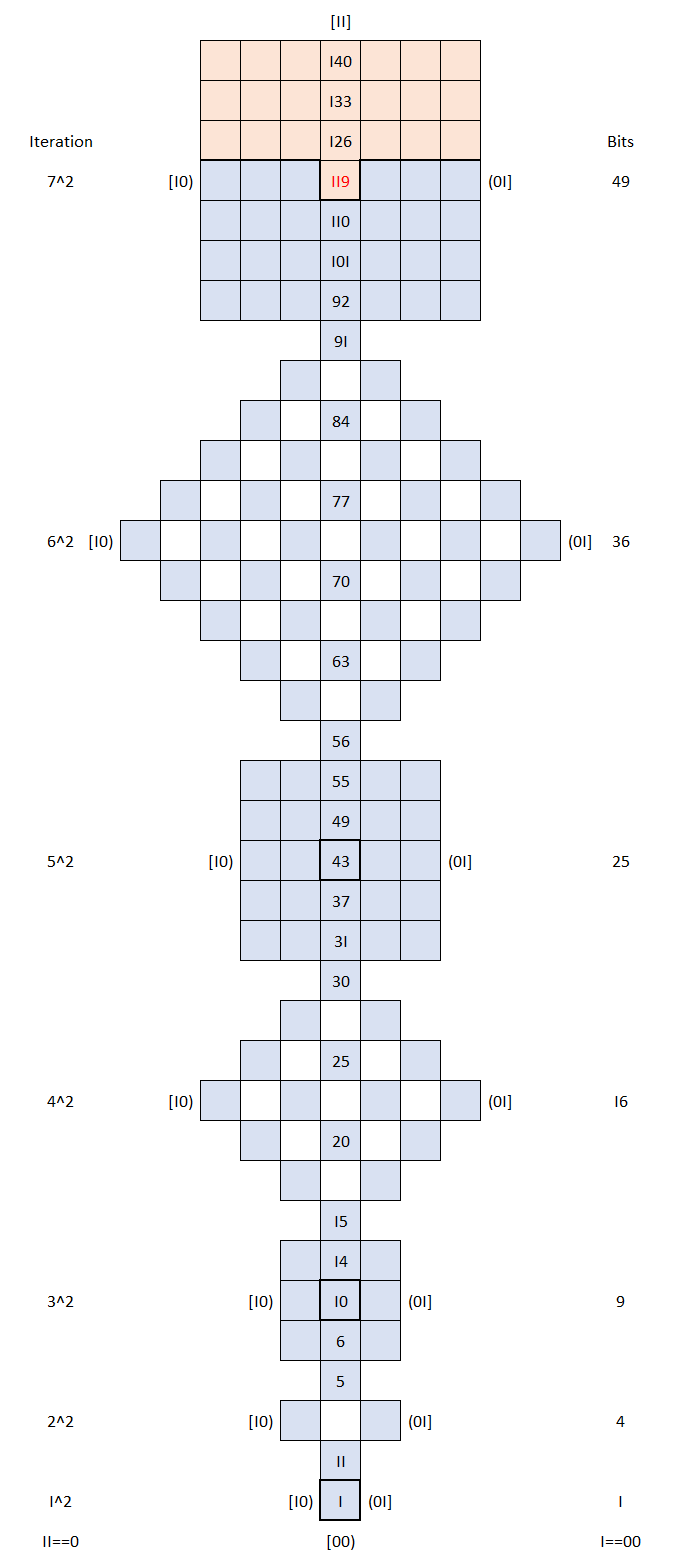
UPDATE – Sep. 9, 2020 – The table below has been updated to include the ternary sequencing for each value. This sequencing defines the binary conversion of I-to-0 and 0-to-I for each starting value. For example, 7 as [7)[5)[4)[2)(1] is I0-0I-I-I because a conversion is required on the first and second iterations of the expression (7 is IIIIIII, which becomes 000I, denoted as ‘I0’ because 7 is odd and the conversion is therefore incomplete — if the value does not require a conversion it is simply expressed as a 0 or I).
